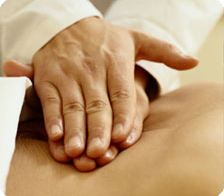19 Feb How to Manage Chronic Pain without Opioids
According to the American Pain Foundation, 76 million Americans are suffering from chronic pain. These people are diagnosed with conditions from arthritis to end stage cancer. For many people, finding pain relief without using opioids can be a challenge. Because of the worrisome side effects of opioids, and the epidemic of drug addiction in the U.S., pain management specialists are using alternatives to narcotics for managing chronic pain.
Guided Imagery
With guided imagery, a therapist helps you imagine a calming place. Many people visualize going to the mountains, laying on the beach, or lying on a bed of feathers. This technique helps relax muscles, and produces the release of natural pain  killers in the body, called endorphins.
killers in the body, called endorphins.
Chiropractic Care
Because many people have chronic pain arising from the back or neck, chiropractic care can help. Chiropractors are doctors specially trained to treat spinal column injuries and musculoskeletal problems. The doctor performs special manual manipulations of the joints and bones, returning the body to normal alignment. These treatments are done on a weekly basis, and reduce or eliminate chronic pain.
Physical Therapy
A physical therapist is a healthcare professional who has a graduate degree. Physical therapy involves exercises and measures used to strengthen muscles, increase mobility, improve function, and facilitate flexibility. The therapist uses heat, ice, electrical stimulation, and ultrasound to offer pain relief. In addition, massage is used to ease sore and tight muscle group tension.
TENS
Transcutaneous electrical nerve stimulation (TENS) involves wearing a small battery-powered device that has wires running to attach to electrodes, which are placed along the back on the skin. The unit emits mild, pleasant electrical current via the electrodes, which block pain signals from being sent to the brain.
Acupuncture
 Acupuncture is an ancient therapy that involves the use of tiny, fine needles, which are placed into the skin and subcutaneous tissue at certain key points along the body. The goal of acupuncture is to correct nerve problems and realign energy pathways (restore energy or chi). This treatment has been shown to help with migraines, fibromyalgia, arthritis, and chronic back pain.
Acupuncture is an ancient therapy that involves the use of tiny, fine needles, which are placed into the skin and subcutaneous tissue at certain key points along the body. The goal of acupuncture is to correct nerve problems and realign energy pathways (restore energy or chi). This treatment has been shown to help with migraines, fibromyalgia, arthritis, and chronic back pain.
Spine and Joint Injections
The Chandler pain management specialist can administer a steroid injection, with or without an anesthetic. The medications are deposited right around nerves, or into the epidural space. With these injection methods, real-time x-ray is used to assure correct needle placement. The effects of the steroid offer long-term pain relief.
In addition, there are additional procedure options including joint injections and various nerve blocks. Also, the latest technique involves regenerative medicine. Stem cell injections and platelet rich plasma therapy offer repair of cartilage, bone, tendons and ligaments.
Surgery
As a last resort, the pain management specialist may recommend surgery to fix your problem. This depends on if or not the issue is fixable with surgical measures. Common surgeries include laminectomy, spinal fusion, herniated disc decompression, and discectomy.
Movement-Based Therapies
These therapies include:
- Yoga – Indian practice for posing and stretching the muscles.
- Pilates – Resistance and strengthening regimen.
- Feldenkrais – A therapy that builds efficiency of movement.
- Tai chi – A Chinese practice that improves balance.
Nutritional and Herbal Remedies
Food choices, dietary supplements, and herbal products are often used for chronic pain. These drugs are marketed for soothing pain, decreasing inflammation, and relieving insomnia.
- Omega-3 fatty acids – Nutrients abundant in fish oil, flax seed, or in supplements; reduce body inflammation.
- Mediterranean diet – Used for decreasing inflammation, and involves eating fish, whole grains, fruits and vegetables.
- Ginger – A root that stops pain-causing molecule release.
- Turmeric – A spice known to decrease inflammation.
- Methylsulfonylmethane (MSM) – A naturally occurring substance that helps build cartilage and bone.
Dr. Yeddu at Desert Interventional Spine Consultants offers over twenty five options for pain relief. Most insurance is accepted at the practice, and each patient is treated with customized options for relief. Call today for an appointment!




Sorry, the comment form is closed at this time.